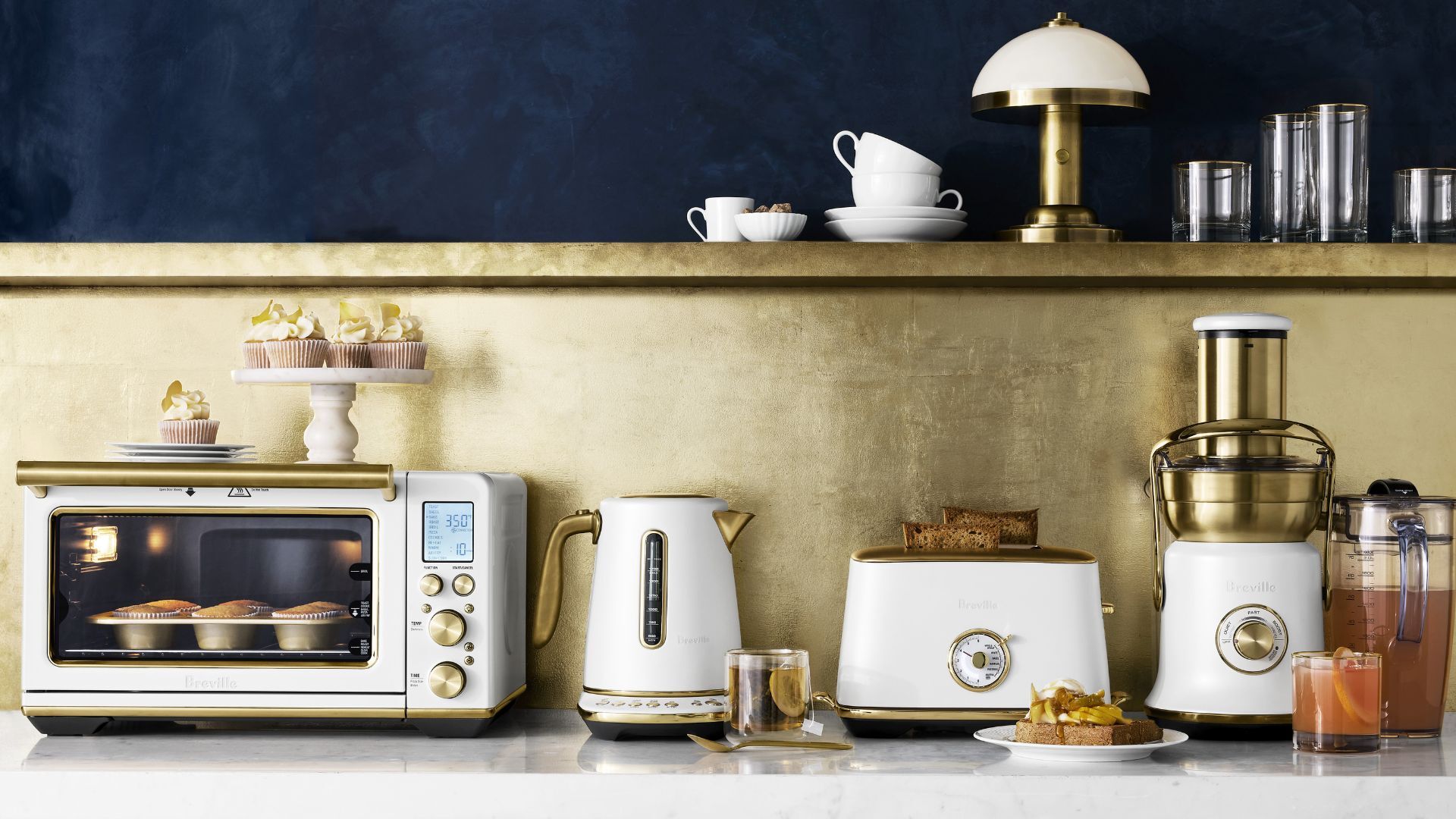Tom's Guide Verdict
The Key2 LE makes BlackBerry's physical keyboard phone affordable, though it carries some compromises to hit its lower price.
Pros
- +
Good physical keyboard
- +
Security-minded software
- +
Performs similarly to Key2
Cons
- -
Short battery life
- -
No trackpad
- -
Cheap, plastic design
- -
Drab cameras
Why you can trust Tom's Guide
When TCL released the BlackBerry Key2 earlier this year, we were impressed by Chinese phone maker TCL's second stab at building a BlackBerry with a physical keyboard. But we weren't as enamored with the handset's price: $649, which was $100 more than its predecessor's for reasons we found hard to justify.
Perhaps TCL saw the error of of its ways, or maybe just an opportunity. Because shortly after the Key2's debut, the company announced a less expensive and less powerful variant named the Key2 LE. This BlackBerry downgrades its processor, RAM, cameras and battery size and trades its aluminum construction for polycarbonate. In doing so, it manages to hit a much more reasonable price of $449 — $200 less than the Key2.
But with all those compromises working against it, can the Key2 LE remain a worthy contender for enterprise users? Here's what the new phone brings to the table, and where it succeeds and fails against its pricier rival in the BlackBerry family.
Update (Jan. 8)
TCL announced at CES 2019 that the BlackBerry Key2 LE will soon be available through Verizon for that carrier's business customers. We've updated the availability section of this review to reflect that.
Price and Availability
The Key2 LE normally costs $449 (£349) but is available for $429 from Amazon and Best Buy as of this writing. Like the regular Key2, this new version is designed to work with GSM networks like AT&T and T-Mobile. It's even certified to work on Verizon, and soon that carrier will start selling the phone to its business customers. (Unfortunately, you're out of luck if you prefer using Sprint's network.)
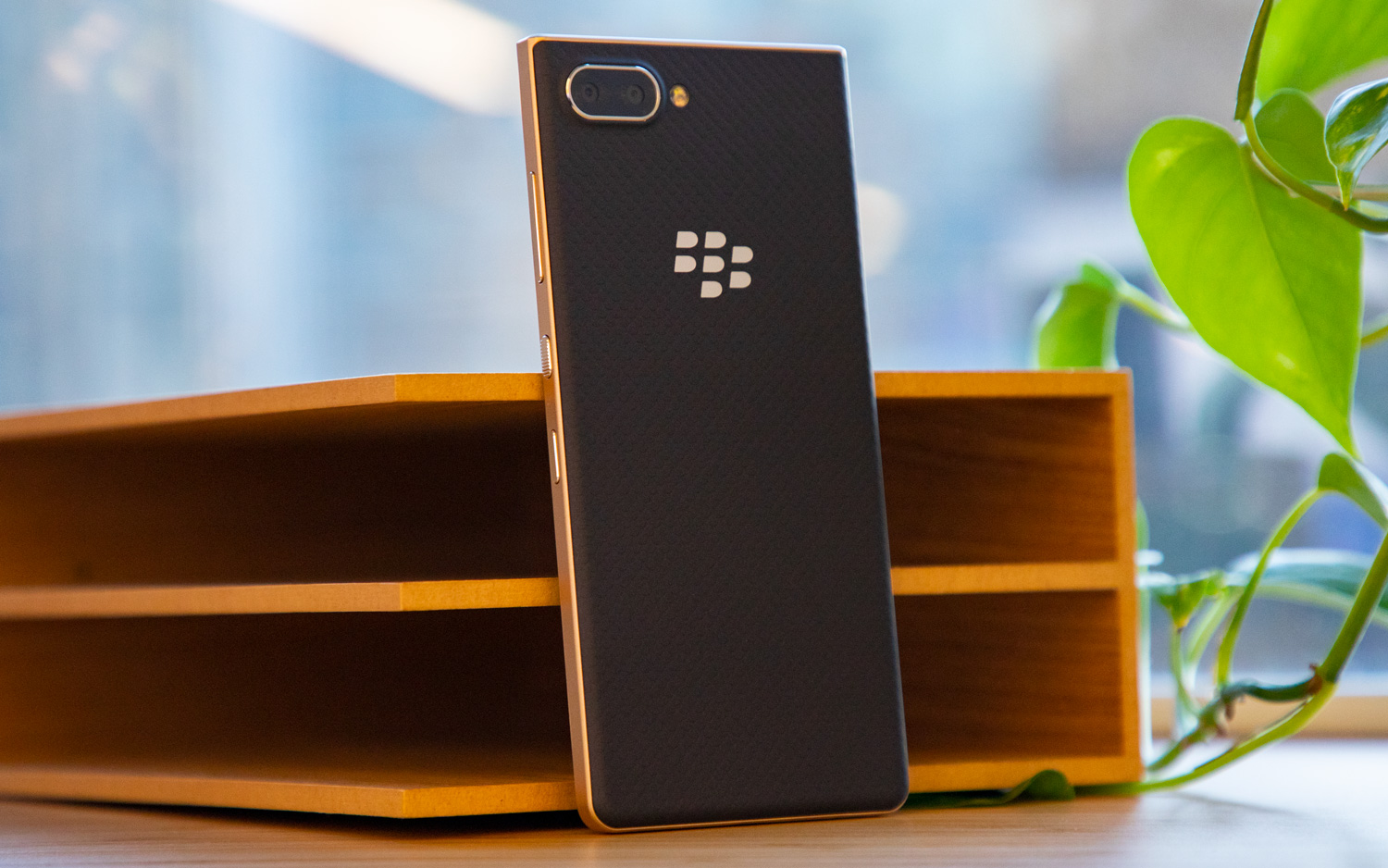
The Key 2 LE comes in three different colors — Slate, Champagne (gold) and Turbo (red) — although, at the time of writing, Slate is the only option available at U.S. retailers. The phone packs 4GB of RAM and 64GB of storage; in other regions, like the U.K., TCL sells a cheaper 32GB model. There's a microSD slot on the side of the phone that allows you to expand capacity up to 256GB.
BlackBerry Key2 LE Specs
| Row 0 - Cell 0 | BlackBerry Key2 LE | BlackBerry Key2 |
| Price | $449/£349 | $649/£579 |
| OS | Android 8.1 Oreo | Android 8.1 Oreo |
| Screen Size (Resolution) | 4.5-inch LCD (1620 x 1080) | 4.5-inch LCD (1620 x 1080) |
| CPU | Qualcomm Snapdragon 636 | Qualcomm Snapdragon 660 |
| RAM | 4GB | 6GB |
| Storage | 64GB | 64GB/128GB |
| microSD Slot | Yes, up to 256GB | Yes, up to 256GB |
| Rear Camera | Dual: 13 MP (ƒ/2.2); 5 MP (ƒ/2.4) | Dual: 12 MP (ƒ/1.8); 12 MP (ƒ/2.6) |
| Front Camera | 8 MP | 8 MP |
| Battery Size | 3,000 mAh | 3,500 mAh |
| Water Resistance | No | No |
| Size | 5.96 x 2.82 x 0.33 inches | 5.96 x 2.82 x 0.33 inches |
| Weight | 5.5 ounces (156 grams) | 5.9 ounces (168 grams) |
Place the Key2 LE side-by-side with the Key2, and you're not likely to notice what TCL changed between the two handsets — once you get past the design, that is.
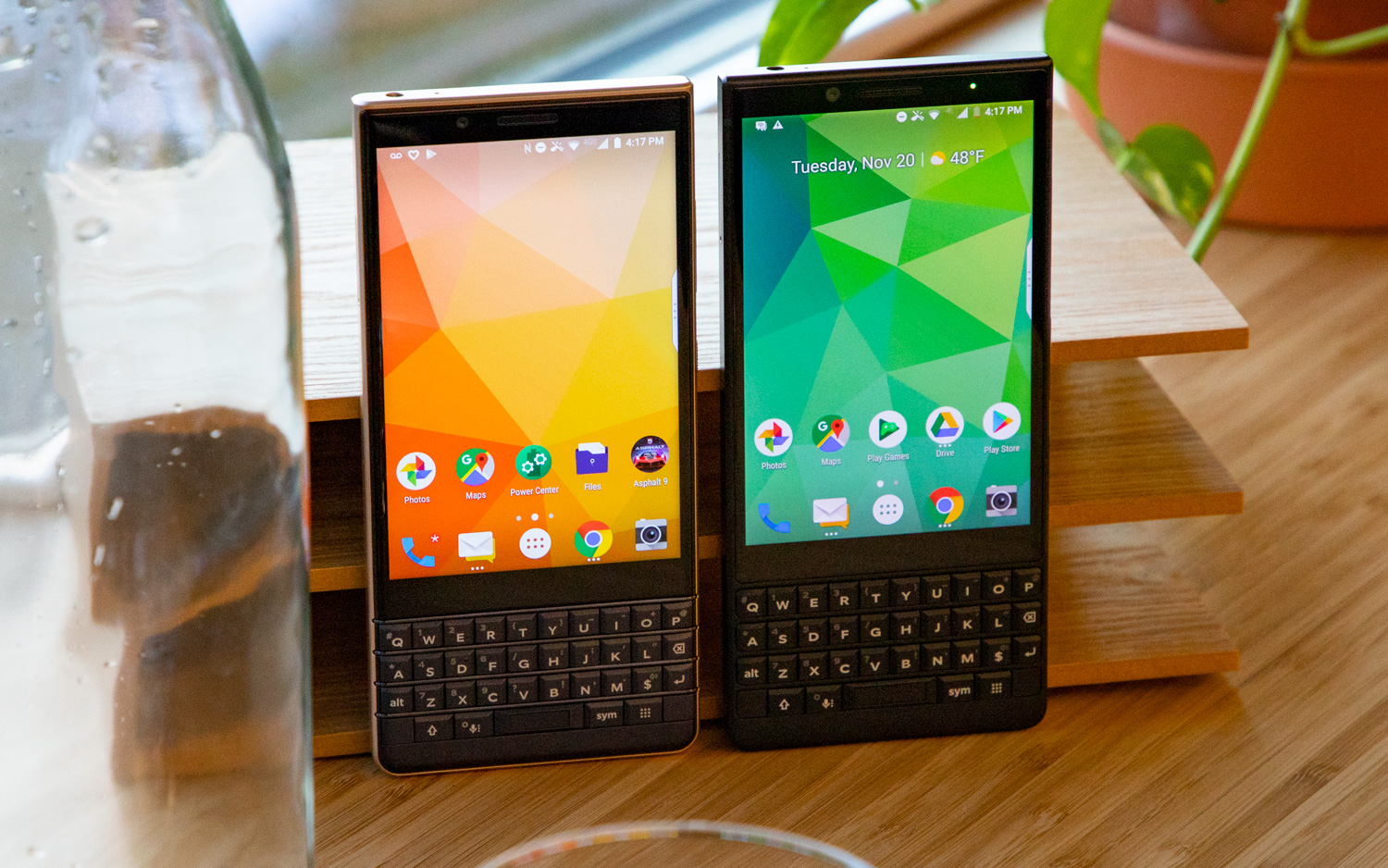
The Key2 LE incorporates a plastic frame, making it about half an ounce lighter. And unlike the standard Key2’s unibody construction, the Key2 LE features a plastic ring encircling the display and keyboard, joining the face of the device with those faux-brushed metal sides. The rubbery, soft-touch backing has also been refinished with a new dotted pattern that doesn't feel quite as grippy as the fine diamond texture of the original model.
The Key2's signature feature — its physical QWERTY keyboard — has seen some alterations, too. The keycaps themselves have shrunk ever so slightly, though they're still 10 percent larger than those on 2017’s KeyOne.

An arguably more divisive omission, however, relates to the keyboard's touch sensitivity. TCL has removed it from this model, meaning you can't swipe on the keyboard to scroll through web pages. However, the spacebar still functions as a fingerprint sensor, and the Speed Key has been preserved for keystroke shortcuts.
Everything else that differentiates the Key2 LE is hidden from view. The lower-priced model features 4GB of RAM, as opposed to the Key2's 6GB, and incorporates Qualcomm's Snapdragon 636 CPU, instead of the Snapdragon 660 chipset.
MORE: Best Smartphones on the Market Now
The camera employs a dual-lens setup on the back for portraits with artistic bokeh, though the Key2 LE's 13-megapixel main sensor and 5-MP depth sensor are exclusive to this model and different from the stereo 12-MP setup in the Key2. Finally, the battery capacity has been downsized from 3,500 mAh to 3,000 mAh.
What we like about the Key2 LE
Several things stand out about this stripped down version of the BlackBerry Key2.
Keyboard still shines: While TCL's keyboard cost-saving measures likely won't be warmly received from the BlackBerry faithful, I was pleasantly surprised to find myself typing faster on the Key2 LE than I did on the Key2.
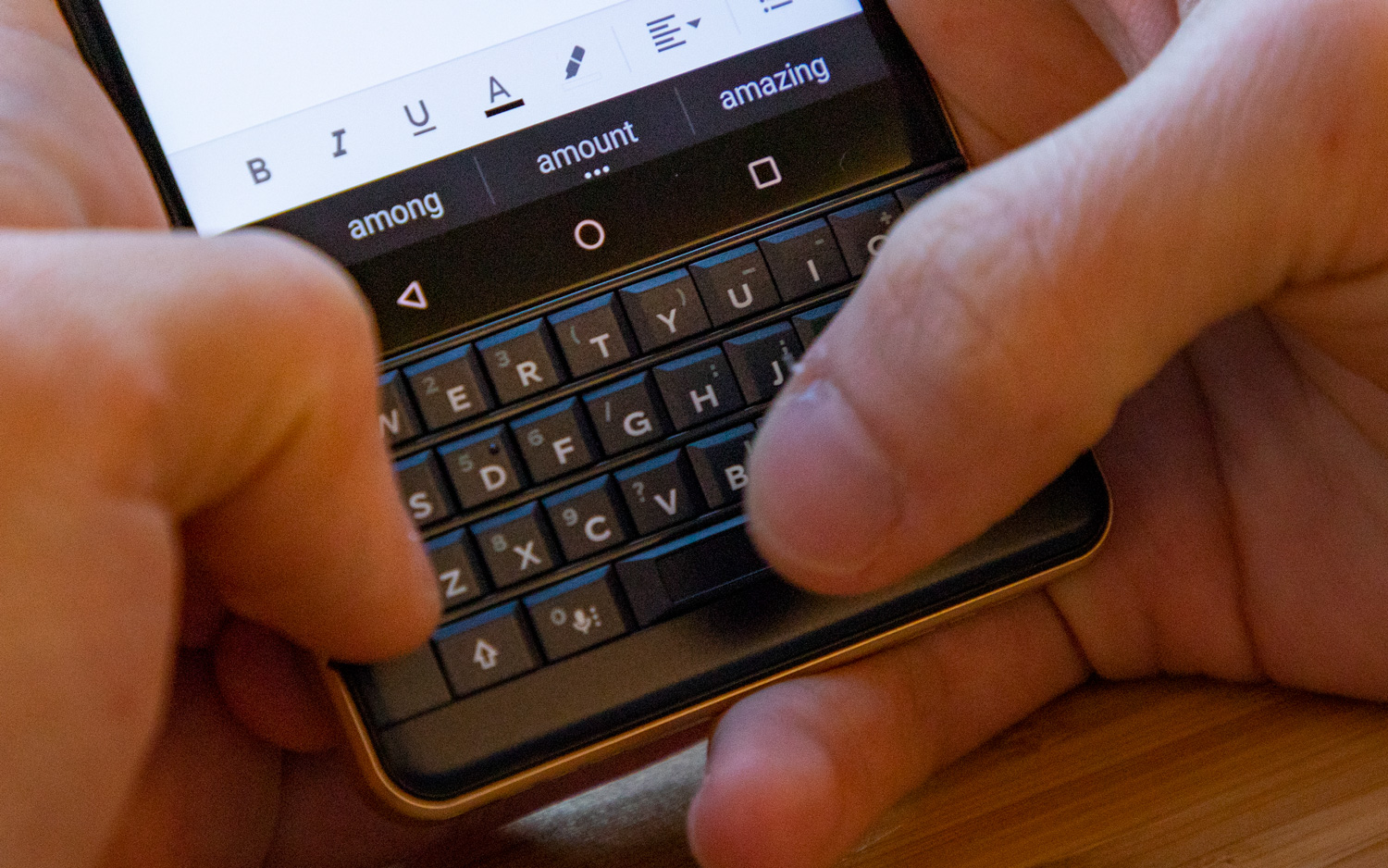
Yes, the keycaps are indeed a hair smaller on the new model, though it didn't affect my dexterity as much as I expected. The bigger change, I quickly discovered, was how TCL lessened the keys' degree of travel.
It's a small change, but the result is that you encounter a bit less resistance with every press. That helped me bounce from key to key faster, and the time I saved definitely added up. I am by no means a physical keyboard maestro; my first attempted at The Typing Cat's test with the Key2 yielded a lousy 19 words per minute. But I was able to turn out a marginally more respectable 25 wperm with the Key2 LE.
DTEK software and App Cloning: BlackBerry's DTEK suite, which serves as the nexus of all the Key2 LE's security-minded features, remains mostly unchanged from previous devices. That means you get detailed reports of what apps are abusing permissions (and when and where they're doing it, no less). Other tools, such as the Privacy Locker encrypted folder and Redactor for markup, are designed to safeguard your enterprise secrets.
There is one new addition to DTEK's repertoire, however, and it comes in the form of app cloning. Now, software that is typically tied to a single device (like, say, WhatsApp or Snapchat) can be duplicated if you so choose, allowing you to use both your personal and professional profiles on the same phone.
TCL isn't first to introduce this feature — Huawei pulled it off more than a year ago, and it's been reaching increasingly more Android phones ever since. But the Key2 LE’s implementation is the best we’ve encountered because it takes advantage of the phone’s dual-SIM nature. Cloned apps and multiple accounts can be tied to individual SIM cards and therefore phone numbers — a huge boon for social media managers.
Decent performance: The Key2 wasn’t a powerhouse by any stretch, and neither is the Key2 LE. The cheaper model's Snapdragon 636 chipset sits somewhere between the Snapdragon 625 inside last year’s KeyOne and Moto G5 Plus, and the Snapdragon 660 inside the regular Key2. In fact, this LE variant is driven by the same chip behind the much cheaper Nokia 7.1.
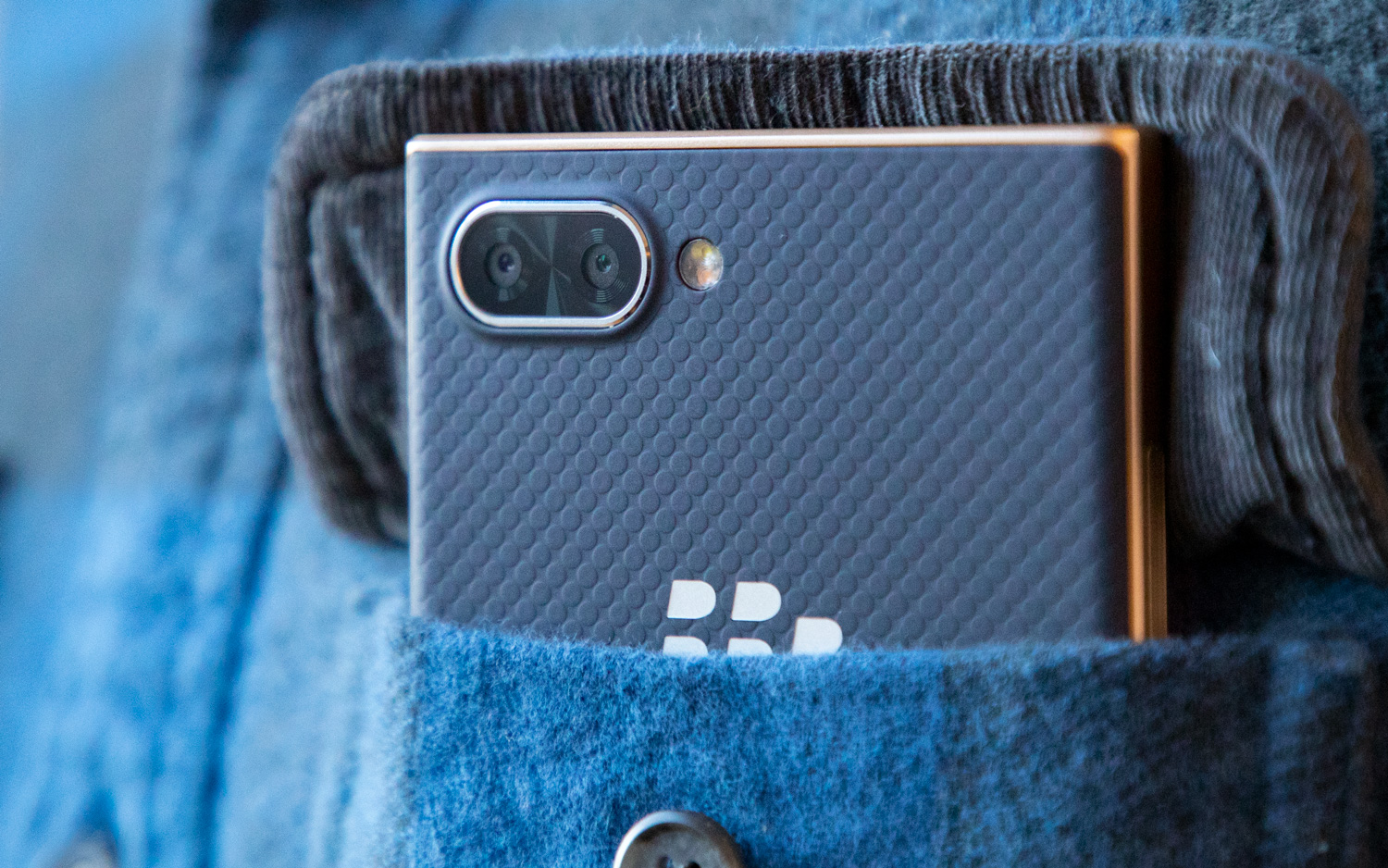
However, while the Key2's $649 price definitely seemed a bit high for its limited power — especially compared with handsets like the OnePlus 6T that offer flagship-beating specs for $529 — the Key2 LE is a more fitting marriage of performance and affordability. The latest BlackBerry turned in a Geekbench 4 score of 4,945 — right on target with the Nokia 7.1's 4,953 result, though the Nokia costs $100 less.
The Key2 LE is a more fitting marriage of performance and affordability than its pricier sibling.
The Key2 LE's 4GB of memory isn't quite as generous as the Key2's 6GB, but it's still enough to keep background processes humming along and accommodate frequently switching apps, as business-minded users are wont to do.
MORE: Best Budget Phones - Unlocked Phones Under $200, $300 ...
Graphics performance isn't as blistering, of course — this isn't a device we recommend for demanding games, as its Sling Shot Extreme OpenGL ES 3.1 score of just 957 suggests. Arcade racer Asphalt 9: Legends automatically dropped down to modest settings to accommodate the hardware, and even then, gameplay was still inconsistent, with frame skips and hiccups peppering the experience.
What we don't like about the Key2 LE
Its strengths aside, the Key2 LE suffers from notable flaws we couldn't overlook.
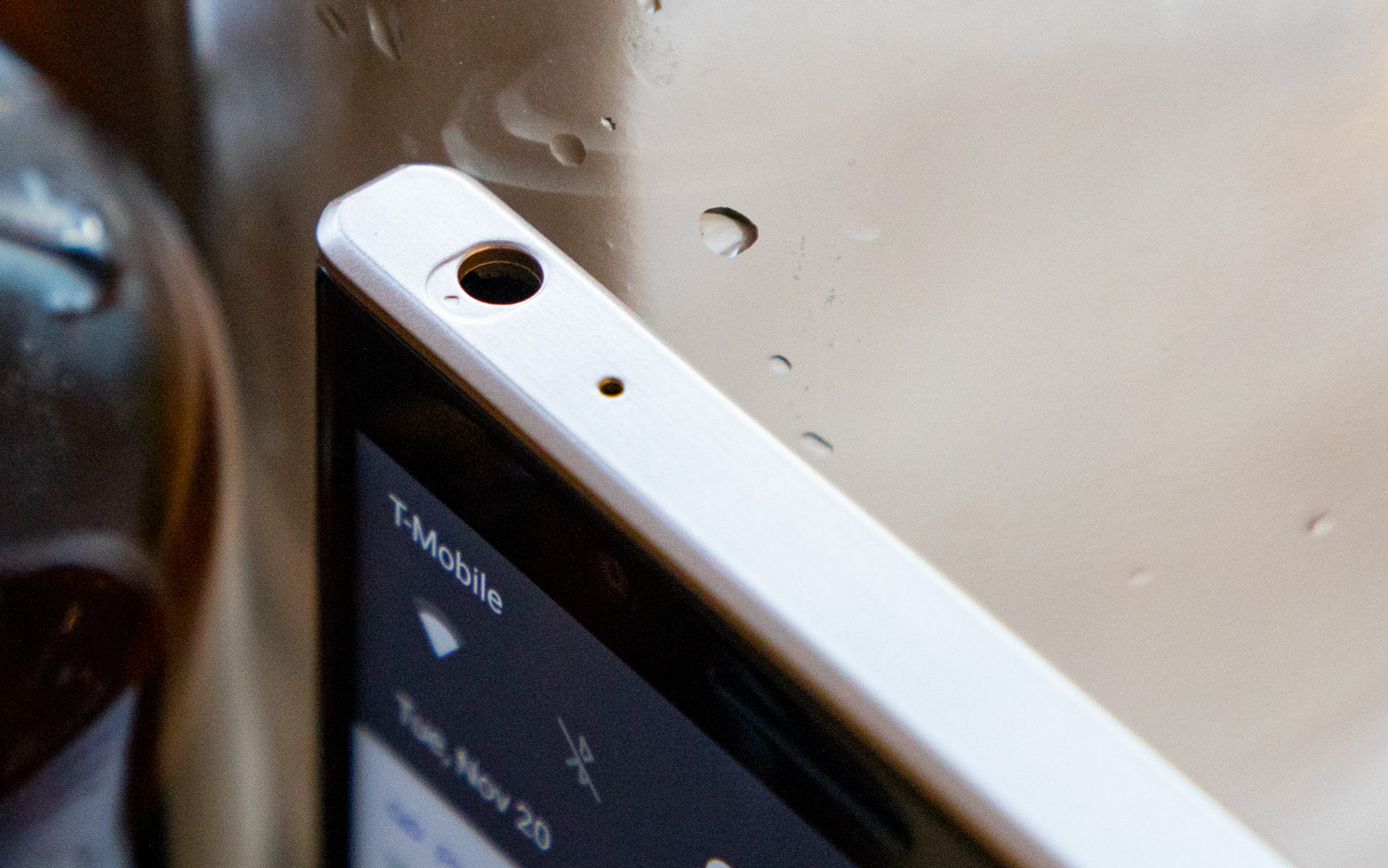
Design and build quality: The Key2 was a real step forward for modern BlackBerry, with a sleek, consistent design devoid of chintzy materials and gaudy metallic accents. In matte black, it was subtly stunning and smart-looking, and more attractive than any BlackBerry-branded handset had a right to be.
The Key2 LE, unfortunately, moves in the wrong direction. In many ways it's a cross between the KeyOne and Key2, as it emulates the newer phone's general shape but carries over the first-generation's frets in the keyboard and jumbled-together assortment of surfaces, textures and materials.
Plastic can be a replacement for aluminum when done well. But in this case, it leaves the Key2 LE feeling like the budget BlackBerry that it is. The fake brushed texture on the polycarbonate frame won't fool anyone, either — it's the kind of fruitless attempt at conveying an upmarket look that so many supercheap budget models from the likes of Alcatel and Samsung try to pull off.
The change to a plastic design leaves the Key2 LE feeling like the budget BlackBerry that it is.
At least the Key2 LE's still got a headphone jack, and the phone's good-enough 4.5-inch 1620 x 1080 LCD display is the same as the Key2's.
Unremarkable cameras: The dual 13-megapixel and 5-megapixel lenses on the back of the Key2 LE are about par for the course as far as budget phone cameras are concerned. It's not the worst photography we've seen in a budget phone, though BlackBerry's camera struggles with white balancing and has a tendency to over-sharpen.
More often than not, that over-sharpening leads to an abundance of noise. Looking out at the ice rink at New York's Bryant Park, the Key2 LE presents a scene with muted colors and a greenish-yellow cast compared with what the Nokia 7.1 achieved. BlackBerry's shooters tinge poorly lit areas with unsightly graininess and multicolored artifacts, like at the base of the flower arrangement and lighting fixture.
In our video studio, the Nokia 7.1 demonstrated its capabilities in low-light compared with the Key2 LE, which failed to light the frame as thoroughly or convey the crimson hues of the brick wall. However, the BlackBerry's sharpness worked to its advantage here — something particularly evident as you zoom into the tools and other fine details.
To its credit, the Key2 LE also captured a clearer shot of the shops at Bryant Park's Winter Village. The text on the storefronts is noticeably easier to read on BlackBerry's phone, and the Key2 LE actually bested the Nokia 7.1 concerning the texture of the stone walkway and the side of New York Public Library, which sits adjacent to the park.
The 5-MP depth sensor on the back of the Key2 LE allows bokeh for portraits, though don't expect the results to rival what you get from dual-lens flagships like the iPhone XS and Samsung Galaxy S9+. Both the BlackBerry and Nokia turn in blurry portraits of my colleague Jorge, though at least the Nokia gets his skin tone mostly right and dials down the noise to acceptable levels.
There's less to say about the Key2 LE’s selfies shot by the front 8-MP camera. Images lack some fidelity as they smooth out facial features and blemishes even when retouching is switched off. The relative darkness from BlackBerry's front camera compared with what the Nokia 7.1 turned in isn’t particularly flattering, either.
BlackBerry's camera struggles with white balancing and has a tendency to over-sharpen.
Loss of trackpad functionality: The Key2 embedded a trackpad in its keyboard that assumed different roles throughout the phone. You could use it to scroll through webpages and apps without obscuring the display, move the typing cursor around text fields or flip back-and-forth between home screens.
While the feature had been done before — it debuted on 2014's BlackBerry Passport, a device built at a time when BlackBerry was still manufacturing its own hardware — it was an exclusive perk with clear real-world utility. More important, it proved the old-fashioned physical keyboard, ordinarily dismissed as a relic, could be innovated in ways that its touch screen-only brethren could not.
Sadly, that calling card has been scrubbed in the Key2 LE, and TCL's latest BlackBerry is worse off for it. The embedded trackpad was starting to become a memorable feature for a brand that could certainly use something to be remembered for; with its loss, the Key2 LE has lost a big part of its identity, too.
Smaller battery: The original Key2 lasted for 11 hours and 9 minutes when we put it through our battery test earlier this year, and we didn't expect the Key2 LE to be far behind. While TCL did shrink the battery to 3,000 mAh from 3,500 mAh on the regular Key2, this is still a handset with a midrange chipset and less-than-full-HD LCD display. Ten hours, or maybe 10-and-a-half-hours should have been doable.
MORE: Smartphones With the Longest Battery Life - A Comparison
Unfortunately, the Key2 LE underwhelmed our even-tempered expectations. It turned in just 8 hours and 45 minutes of continuous LTE web surfing over T-Mobile's network. Granted, that's better than the 7:41 of the Nokia 7.1, but BlackBerry was once a brand renowned for its consideration for battery life, and the Key2 LE doesn't back up that reputation.
Bottom line
It was a prudent move for TCL to attempt a less expensive version of the BlackBerry Key 2. Unfortunately, in the process, the company eliminated many of the things we loved about the phone.
Sure, the Key2 LE is cheaper, but it's lacking those critical BlackBerry hallmarks. The sleek metal unibody design has been swapped for something flimsier and tackier, the battery has evidently been made a bit too small to keep it lasting as long as we'd hope and the decision to remove touch sensitivity has stripped the handset of its modernity.
The result simply feels old and cheap — even though, in the grand scheme of things, it's not even that compelling a bargain. The Nokia 6.1, 7.1 and Moto X4 are all outfitted with stock Android One, which is already quite secure and clean, and guarantee similar performance for hundreds less.
The regular Key2 may have been overpriced at $649, but at least it conveyed those BlackBerry values of quality and reliability that TCL has so desperately tried to instill in smartphone buyers again. The Key2 LE, conversely, feels like an imitation. It's a great way for cost-conscious buyers to get a handset with a physical keyboard — and, sadly, not much else.
Credit: Tom's Guide
Adam Ismail is a staff writer at Jalopnik and previously worked on Tom's Guide covering smartphones, car tech and gaming. His love for all things mobile began with the original Motorola Droid; since then he’s owned a variety of Android and iOS-powered handsets, refusing to stay loyal to one platform. His work has also appeared on Digital Trends and GTPlanet. When he’s not fiddling with the latest devices, he’s at an indie pop show, recording a podcast or playing Sega Dreamcast.

